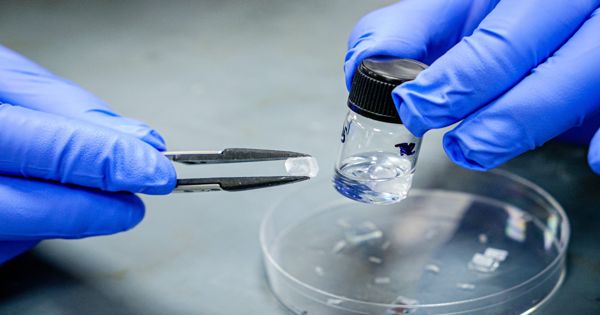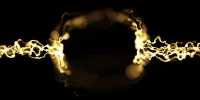A team of researchers led by the Nanyang Technological University of Singapore (NTU Singapore) has developed a new material that, when electricity is applied to it, can flex and bend forty times more than its competitors, opening the way to better micromachines. Conversely, when bent, it generates electricity very efficiently and could be used for better “energy harvesting”-possibly recharging batteries in gadgets only from everyday movements.
The novel material is both electro-strictive and piezo-electric. Its electrostrictive properties mean that it can change shape when electrical current is applied, while piezoelectric means that the material can convert the pressure into electrical charges.
A team of researchers has developed a new material, that when electricity is applied to it, can flex and bend forty times more than other materials in the same class, opening the way to better micro machines.
When an electrical field is applied, the atoms that make up electrostrictive materials shift, causing the material to deform and flex. When the piezoelectrics are compressed, the pressure is converted into electrical charges that accumulate in the material.
Scientists have discovered that when an electrical field is applied, the new hybrid material could be strained by up to 22 per cent, the maximum strain recorded in the piezoelectric material so far. This far surpasses traditional piezoelectric structures, which only bend up to 0.5 per cent as the current passes through it. The new composite is even more energy stable than other piezoelectric and electrostrictive materials.
Piezoelectric materials are widely used in guitars, microphones, cameras and electric motors. For eg, a piezoelectric pick-up is a mechanism used in an electrical guitar to transform the sounds from the strings to an electrical signal that is then processed for recording music or amplified by a loudspeaker. Ferroelectric crystals were first found in 1920 and have been used to produce piezoelectric crystals for over 70 years since they are quickly incorporated into electrical devices.
However, they are weak and stiff, bending just 0.5 percent, which largely restricts their use to mechanical devices such as actuators (parts that convert an electric control signal into mechanical motion, for example, a valve that opens and closes).
Few ferroelectrics often contain lead, which is toxic, and its existence in piezoelectric systems is one of the reasons why electronic waste is difficult to recycle. Standard ferroelectrics, such as perovskite oxides, are often unsuitable for lightweight electrical instruments that are in contact with the skin, such as portable biomedical devices that monitor heart rhythm.
The new material was published in Nature Materials last month by Professor Fan Hong Jin of the School of Physical & Mathematical Sciences and his team, including his PhD student Mr Hu Yuzhong, who is the first author of this article. Professor Junling Wang of the Southern University of Science and Technology, China, former NTU professor at the School of Materials Science and Engineering, is also part of the team.
Prof Fan said, “Being more than 40 times more versatile than comparable electrostrictive materials, the new ferroelectric material can be used in highly efficient devices such as actuators and sensors that bend when exposed to the electrical field. With its superior piezoelectric properties, the material can also be used in mechanical devices that collect energy when bent, which would be useful for recharging.
“We think we can substantially improve on this performance in future by further optimising the chemical composition, and we believe this type of material could play a key role in the development of wearable devices for the Internet of Things (IOT), one of the key technologies enabling the 4th Industrial Revolution.”
Developing a flexible ferroelectric material
In order to create a versatile ferroelectric material, the researchers changed the chemical structure of the hybrid ferroelectric compound C6H5N(CH3)3CdCl3 or PCCF in short, which could theoretically bend up to a hundred times more than standard ferroelectrics. In order to further expand the freedom of movement of the substance, scientists have changed the chemical composition of the compound by substituting some of the chlorine (Cl) atoms for bromine (Br), which is close in size to chlorine, to break the chemical bonds at particular points in the framework. This made the material more stable without compromising its piezoelectric properties.
The new material is simple to produce, needing only the solution-based processing in which the crystal forms when liquid evaporates, as opposed to conventional ferroelectric crystals requiring the use of high-powered lasers and the formation of electricity. When an electrical field has been added to the modern PCCF compound, the atoms in it have moved considerably more than the atoms in most traditional ferroelectrics, straining up to 22 per cent more than conventional piezoelectric compounds.















